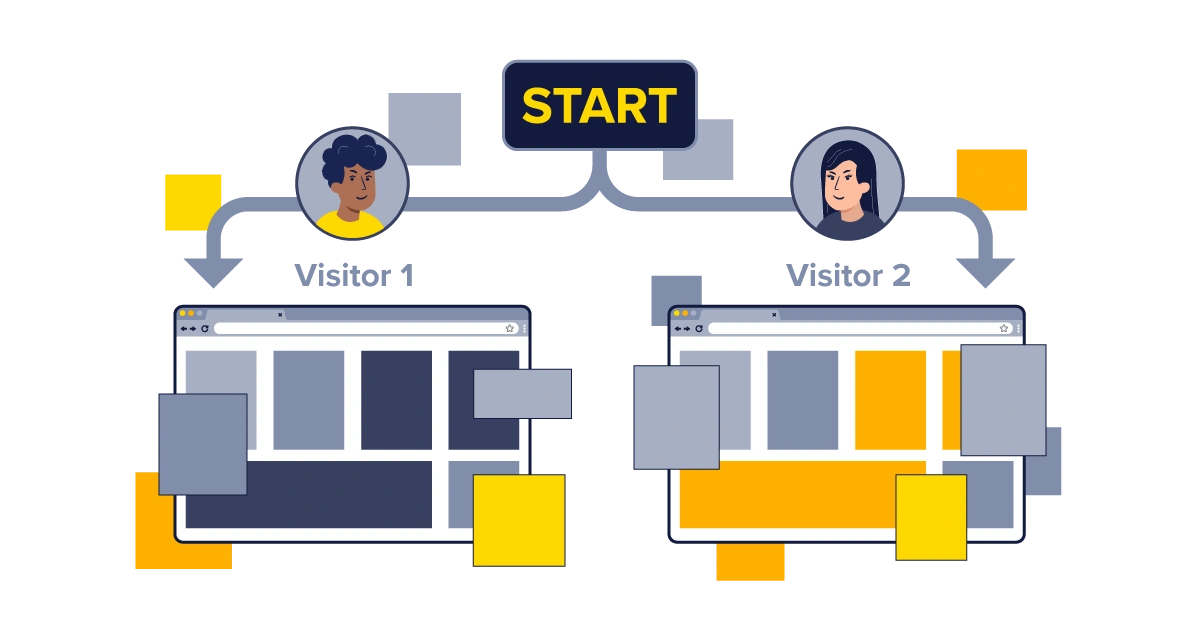
GSD
How Your CMS Impacts SEO & CRO
Posted by Jonathan Ames on October 19, 2023
The two biggest challenges a marketer faces:
-
Increasing traffic
-
Increasing conversions
If you need to increase traffic, SEO (search engine optimization) is usually a big part of your plans, if not the biggest. If you need to increase conversions, then CRO (conversion rate optimization) is on your mind. What’s usually not on your mind is your CMS (content management system)...unless you could boost your SEO and CRO strategies through your CMS. I’ll show you how you can do just that.
SEO and your CMS
A CMS has a lot to do with your SEO. First, all your web content passes through a CMS to get to your website, and the CMS structures that data. Second, your CMS affects the speed at which your web pages can load, which is a huge factor in Google’s ranking algorithm. Third, your CMS can be a bottleneck that slows content production down or speeds it up.
The type of CMS you use, the brand you choose, and the way you set up your CMS, all have a direct impact on your ability to rank in the search engines due to the following factors:
-
Structured data
-
Web page load times
-
The effect of the CMS on production times
1. Structured data in a CMS
Every piece of content can have structured data associated with it that affects SEO. Images have alt tags, Headlines have H1 tags, and Reviews can use Schema. Do your content teams have easy access to enter or specify this information? If not, your SEO specialists or developers will have to, which is a major bottleneck at most companies.
Why does structured data matter?
ButterCMS is built to allow your development team to create the fields for this structured data and have it available to your content team to fill in every time they create new content. The fields appear right beside the content in the CMS interface. It’s simple, and because you don’t have to search for it or use a plugin, everyone will remember to fill it in. You can even make the fields mandatory before content is published!
2. A CMSs effect on web page load times
This is a big one. Why? Because, as marketers, we usually have no levers to affect page load times other than sizing down graphics. Developers can make adjustments in the code to reduce page load times, but they are often constrained by bloated code coming from the CMS.
Increasing page speed
ButterCMS has several levers available for both marketers and developers to improve page load times. Butter has a built-in CDN (content delivery network) to create the fastest load times possible anywhere in the world. Documents, graphics, and videos can have a faster load time if uploaded to ButterCMS.
Since Butter is a headless CMS, it’s not tied to a front-end to display your content. This means your developers can build a fast front-end that increases your page’s speed in the framework of their choice—no more constraints from bloated CMS code.
3. The CMS production bottleneck
The third way that a CMS affects your SEO is the speed with which you are able to produce content. If your content team needs to have developers build their content into web pages, then there is a delay, often lengthy, before you can launch new content. This slows down your SEO. Even if your content team doesn’t need developers to launch content, a complex user interface will slow down production. If your CMS doesn’t have workflows built in, additional slowdowns may come from the effort it takes to get approvals and share draft versions of the content.
Efficient CMS production
ButterCMS has the highest ratings on G2 for ease of use, ease of administration, and setup. By design, the interface is simple and efficient. This speeds up content production for both content creators and developers, allowing SEO content to be produced and launched faster. It also means your teams love working in Butter. That’s why ButterCMS is rated by G2 users as having the highest user adoption rate.
CRO and increasing conversions in your CMS
The second major challenge every marketer faces is increasing conversion rates. The higher your conversion rate, the more value you and your viewers get from your content. Can a CMS affect conversions? Yes, and it’s even more straightforward than the ways a CMS affects SEO.
- Testing innovation
- Personalization
Testing & innovation in a CMS
The most common way to improve conversion rates on your content is to make changes to it and see if it works better. However, most CMSs limit the types of innovations you can make to your content. If you want something outside the framework of your theme then you typically have to switch themes, add plug-ins, or integrate with another platform to extend your possibilities. These themes, plug-ins, and integrations typically slow down your website’s performance and increase security risks and maintenance work.
More possibilities for testing
Butter is built without themes or plug-ins. It is a blank canvas that allows your developers unlimited possibilities. Butter is built on the compostable concept. This means that content can be built within “components'' that are reusable, configurable content containers. Your developers can build these components with connections to any data source. You can use these components to build pages, then add, move, and remove components as you test new variations. Because components take much of the basic work out of building web pages, you can quickly build and test new variations. Flexibility and speed are the keys in testing to improve conversion rates.
Why personalize?
Personalization has been shown to improve conversion rates dramatically. There are many ways to personalize. You can personalize by previous browsing, such as an e-commerce customer seeing products they had previously viewed show up on a page. You can also personalize by putting a customer’s name or company name on a page. If you are able to identify a user when they land on your content, then you can show them personalized content that improves conversion rates.
The problems of personalization in a CMS
Most CMS are not built to assist in personalization. Integrations with 3rd party products or swapping out your CMS with a DXP (digital experience platform) are the options most marketers have to turn to. This requires you to make and store content in two different platforms, your CMS, and your 3rd party platform for personalization. This forces your content team to learn two different content platforms, and ensure that content is updated in both places when changes happen. This increases costs and slows down production.
Custom built personalization
ButterCMS is built to enable personalization. You can build all the content for each segment right in Butter’s components, and you can tag content by whatever identifiers you have in your CRM data. Your developers can then customize the connection between your CRM and ButterCMS to show the personalized content to users that match. All your content stays in one place.
Summary
A CMS can be a bottleneck, or a force multiplier in both improving SEO and conversion rates. You don’t have to settle for a bottleneck that is slowing down your ability to reach your traffic and conversion goals.
Want to see how ButterCMS could boost your SEO and CRO strategies? Set up a demo call and we’ll walk you through it!
ButterCMS is the #1 rated Headless CMS
Related articles
Don’t miss a single post
Get our latest articles, stay updated!















Jonathan is a proven digital marketer with a unique ability to build and execute end-to-end strategies. He loves cooking up videos and events that help show how to get great results. He also hosts the podcast “Cutting Edge: Web Content Development.”